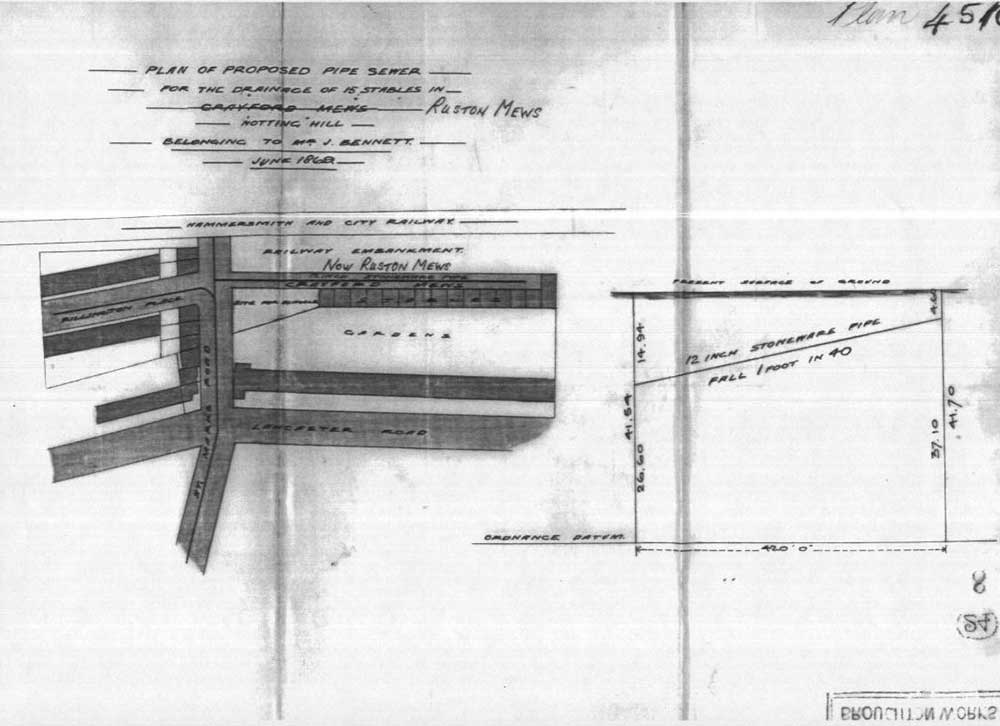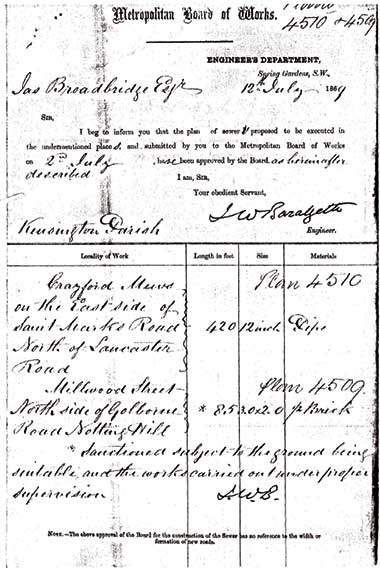As a resource intended to be of interest to both old and new residents and as a reference for the future, we have provided a history section to be expanded with more material as the website develops. A rough chronological framework is used here to structure the information we have to date on Ruston Mews.
Crayford Mews (as Ruston Mews was first called) was built around 1865. The early properties were two storey mews houses and were used to provide shelter for horses, carriages and drivers of that era with a first floor flat for human accommodation and stabling for the carriages and animals underneath. The houses behind Crayford Mews in Lancaster Road were built earlier during the period 1855 to 1858 as part of the St Quentin estate development when speculative house building was rampant in this part of London.
Drainage records are the earliest and most reliable plans available from the period and images of these are available below. Note that Rillington Place is clearly shown on the plan of 1869 for the new sewer submitted by Mr J W Bennett, the then owner of the mews.

Also provided is a copy of the approval document from Metropolitan Board of Works signed by Mr Barazette who was the famous engineer responsible for building the London sewer system and ridding the capital of smells and disease that originated from the polluted Thames in Victorian times.

Crayford Mews operated in this way until the early 1900s when the horse and carriage gave way to the motor car.